|

The planned itinerary for the summer.
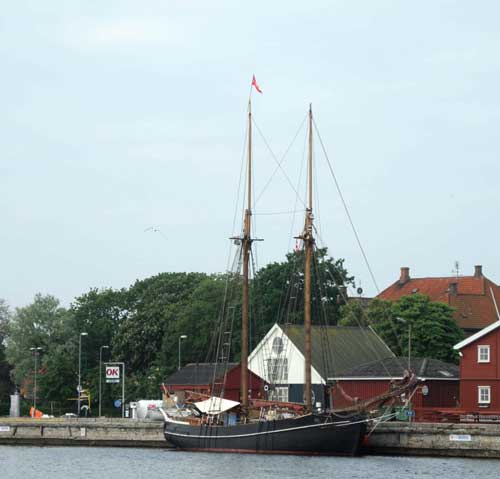
Marstal, Denmark, near where Onora spent the winter.
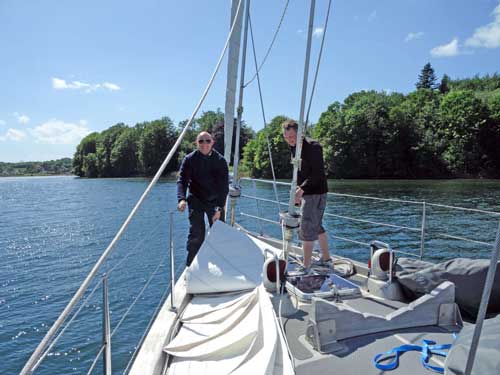
New sails are expensive, but at some point you have to get them.
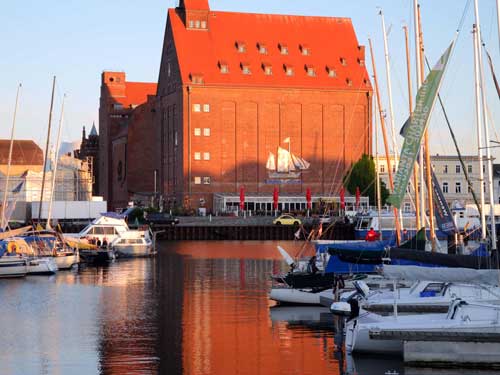
Stralsund Harbor.
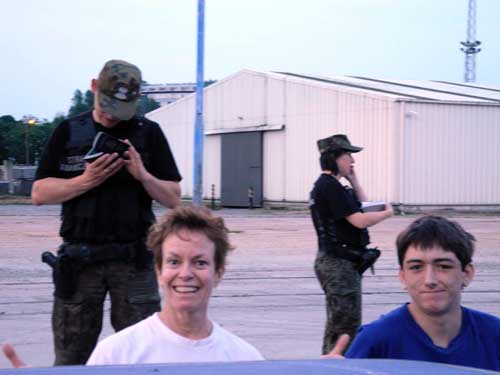
Border patrol in Poland.
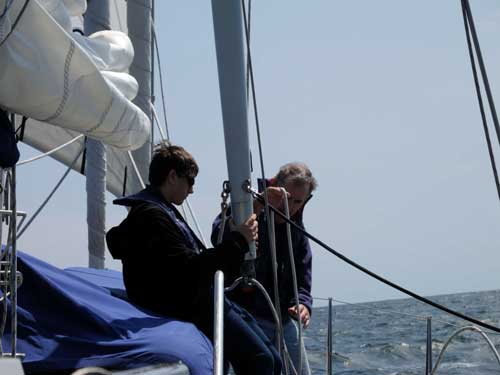
Ian learns the ropes.
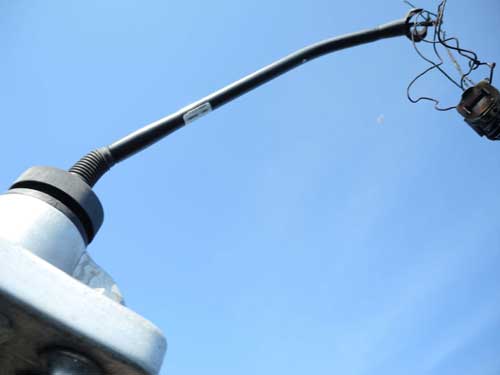
The top of the mast, post-lightning strike.
|

|

|

|
Second Summer on the Baltic Sea, Pt. 1
May 30, 2011
Marstal, Denmark
We returned to Walsted's boatyard on Thuro Island, Denmark on May 22nd where she had wintered. It took a week putting things back together. Our big addition was new sails and new skin for the inflatable dinghy. We figure that sails cost a dollar a mile and after 45,000 miles we were overdue. Launching is stressful. We arrived with a mess of parts, a project list, and a hope that the boat yard might have completed some of the jobs they agreed to do in the fall. We were surprised. Walsteads did everything except hauling out and putting antifouling paint on the bottom. We will sail more slowly with a dirty bottom this year.
This year was unusual. In the past there have always been unforeseen problems. Last year it was a refrigeration motor and the problematic Wispergen generator. Both lost their gas charges over the winter. My big fear was the sails. They were fabricated in the Philippines using drawings of our rig that I hoped were accurate. I was greatly relieved when they fit perfectly. I was doubly surprised when the refrigeration and the Wispergen both started and ran without a hitch.
We are now anchored off Marstal and I am reading 'We the Drowned', a translated novel that tells the history of this sea town. Every son was raised to man ships while the daughters stayed behind to run the town and become widows.
June 5, 2011
Stralsund, Germany
We are in northeastern Germany just back from a train trip to Berlin where we fetched Ian, our seventeen year old grandson, from a Lufthansa flight. Stralsund was a member of the Hanseatic league city states in the 13th and 14th centuries. In contrast to Berlin's impressive modern architecture mixed with the old, after WWII Stralsund rebuilt its old city.
As we approached Stralsund three days ago a police boat met us. We were told to check with passport control. Our first day was spent searching for the right office. When we found it we were taken into an interrogation room and where it took awhile to explain why we were there. English is not widely spoken in the former East Germany.
We are adjusting to having Ian on board. He is a drummer and spends nervous energy tapping his drumsticks in his cabin. Jeannie has suggested that the inflatable dinghy up on the foredeck would be a great place to practice.
June 7, 2011
Darlowo, Poland
We had a long sail from Stralsund to Kolobrzeg where we entered Poland. Ian was successfully introduced to watch keeping which requires keeping us on course and not hitting anything. The wind was steady so once the sails were set it was an easy day. The Kolobrzeg Marina is being rebuilt so we tied up in the commercial port where the border police came to inspect our passports. Checking out was the hard part. We had to pay $20 but finding someone who spoke enough English to direct us to the wrong office took awhile and the wrong office had to find someone to tell us where the right office was. We found it but it was closed. We walked through town, had ice cream and returned to find it opened. The new issue was not having a European VAT tax number. I finally filled in the blank with a random number and everyone winked and was happy. We left.
The day was sunny. The wind was warm and off the land. Onora was slipping along on a beam reach and we were trading watches. Jeannie and I were reading off watch while Ian tapped incessantly.
After several hours dark clouds began to build on shore. These were followed by distant and then local thunder. Soon rain came. We took in sails to avoid becoming overpowered in the gusts. Jeannie commented on the lightning. I explained once again that the odds of getting hit were miniscule. We did have a 75 foot mast but lighting always looks for the closest ground or water; in our case, that meant that only a strike within 75 feet of the boat would hit us. At 76 feet that water would be closer.
And then came a flash and simultaneous boom. Our autopilot abruptly swung into a circle and our instruments blanked out. Jeannie took the wheel while I switched on our spare autopilot. It worked. Most of our instruments did not.
We arrived in Darolow, Poland where a sliding bridge opened to let us into the harbor. We tied up and inspected the boat. All that was left of wind direction and speed instrument at the top of the mast was a plastic arm from which dangled a blackend printed circut board. Just inches below this the VHF radio antenna and mast head light were untouched. A data distributor and two serial to USB hubs attached to the computers were dead but the computers were fine.
We have an independent depth meter and our A.I.S. system which warns us of large ships by showing positions on our computer charting program. It also gives us our position and speed so we have all of the information we need except wind speed and direction. For this there is the Beaufort Scale which has been used by all sailors until the current generation. It consists of thirteen descriptions of the water from 0-Calm 'sea like a mirror' to 'the air is filled with foam and spray. Sea is completely white with driving spray. Visibility is very seriously affected." i.e 12-Hurricane.
An email exchange with B & G our instrument maker, concluded that everything including the wiring will have to be replaced. We will sort out the autopilot later.
- Click here for Part 2 -
| 
|

|

|
|